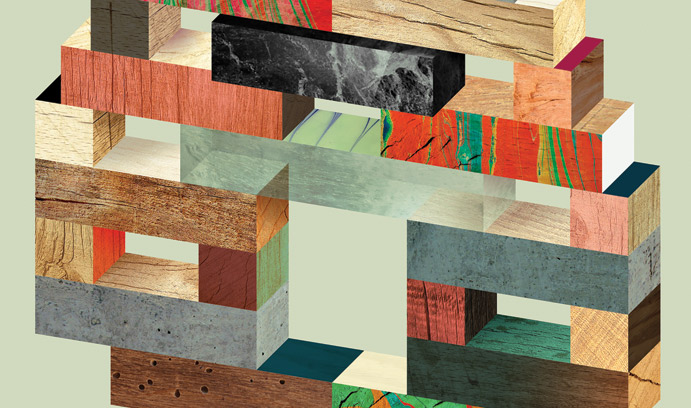A More Resilient Civil Infrastructure

Researchers at Lehigh's Advanced Technology for Large Structural Systems (ATLSS) Engineering Research Center work to fortify structures against natural disasters.
While it may not garner as much attention as fighting terrorism or growing the economy, improving America's infrastructure—its roads, its bridges, and no less importantly, the resiliency of its built civil infrastructure —is one of the country's most pressing challenges.
Lehigh University's Advanced Technology for Large Structural Systems (ATLSS) Engineering Research Center has been conducting and hosting groundbreaking research on improving the resiliency of structures in earthquakes since it opened in 1986. In September 2015, Lehigh was awarded a highly competitive grant by the National Science Foundation (NSF) to establish a shared-use experimental facility associated with the Natural Hazards Engineering Research Infrastructure (NHERI) program. Led by James Ricles, the Bruce G. Johnston Professor of Structural Engineering and the ATLSS Deputy Director, and Richard Sause, the Joseph T. Stuart Professor of Structural Engineering and Director of ATLSS, the five-year, $5 million grant will enable ATLSS to expand its scope into fortifying structures against other natural disasters.
"The country's infrastructure has really deteriorated," says Ricles. "There's a push to develop resiliency, particularly in the aftermath of recent natural hazards such as Hurricane Sandy. There's a need to have structural systems and the community as a whole become more resilient to natural hazards."

The ATLSS Center contains some of the largest structural testing facilities in the world. Its equipment allows for hybrid seismic testing, where real-time experimental simulations are combined with real-time numerical simulations to enable researchers to investigate the behavior of large-scale structural components during seismic events. The center was founded with financial support from the NSF and for a decade was part of the George E. Brown Jr. Network for Earthquake Engineering Simulation program, which supported innovation and education in earthquake engineering. Today it's a part of the NHERI program.
ATLSS researchers have contributed to a number of breakthroughs in earthquake engineering, including braced frames with passive and semi-active dampers, and self-centering structures that absorb seismic loads and allow the structure to remain damage-free. The ATLSS Center's large-scale reaction wall, strong floor and hydraulic actuators, along with the development and implementation of innovative simulation algorithms, allow researchers to do real-time earthquake simulations on actual test specimens that are constructed in the Center.
"Let's imagine you have a building resting on the ground and an earthquake occurs," Ricles explains. "The building is going to be subjected to forces that develop as a result of the accelerations that are exerted on the inherent mass of the system. These forces are from the ground accelerations that develop as a result of the ground moving. Knowing the ground accelerations and inherent mass of the system, we can determine these forces, so we don't need to shake the ground and instead can fix the building to the laboratory strong floor and apply these forces directly to the building."
As engineering concepts for structural systems have improved, the failure of nonstructural components has become the weak link in structural resiliency, Ricles says.
"The reason a building may go offline includes structural damage," he says. "A building, however, may also be declared as unsuitable for occupancy if nonstructural systems in the structure are damaged. For example, if the sprinkler system no longer functions, then you can't occupy the building because of fire safety. If the elevators go out, there's no access for the physically handicapped. Cladding is, of course, an issue."
In September 2015, a team led by Paolo Bocchini, assistant professor of civil and environmental engineering, won a $2.2 million NSF grant "to establish and demonstrate a comprehensive framework that combines models of individual infrastructure systems with models of their interdependencies for the assessment of interdependent infrastructure system resilience for extreme events under uncertainty." "The 'PRAISys' platform (Probabilistic Resilience Assessment of Interdependent Systems) will emphasize a probabilistic approach that permeates all aspects of the models, including the interdependencies," Bocchini says. Lehigh will use the $5 million NSF grant to fund operation of the Center. Researchers from around the world will be able to submit proposals and won't have to pay to use the facility. They'll be looking to discover ways that buildings can remain online following natural disasters.
James Ricles is the Bruce G. Johnston Professor of Structural Engineering, director of the NHERI Lehigh Experimental Facility and deputy director of the ATLSS Engineering Research Center. He received his Ph.D. from the University of California, Berkeley.
Posted on:






